
Salvia
Salvia spp., Zones 3 to 10
With as many as a thousand species, there’s an ideal salvia for nearly every garden out there. Also known as sage, salvia displays long thin spikes of purple hummingbird flowers. Choose native varieties or seek out spectacular selections like Rockin’ Deep Purple or Playin’ the Blues Salvia.
Why we love it: Pollinators go for salvias. You could plant an entire garden of salvia varieties, and it would hum with activity every day.
Check out even more colorful flowers hummingbirds love.

Hummingbird Mint
Agastache foeniculum, Zones 4 to 8
Also known as anise hyssop, this wildflower releases a sweet licorice fragrance when you brush against the leaves. Hummingbird mint is drought tolerant and thrives in well-draining, moist soils, where it grows up to 4 feet tall.
Why we love it: It’s right there in the name! Hummingbirds visit the purple flowers in droves. Butterflies also frequently indulge.
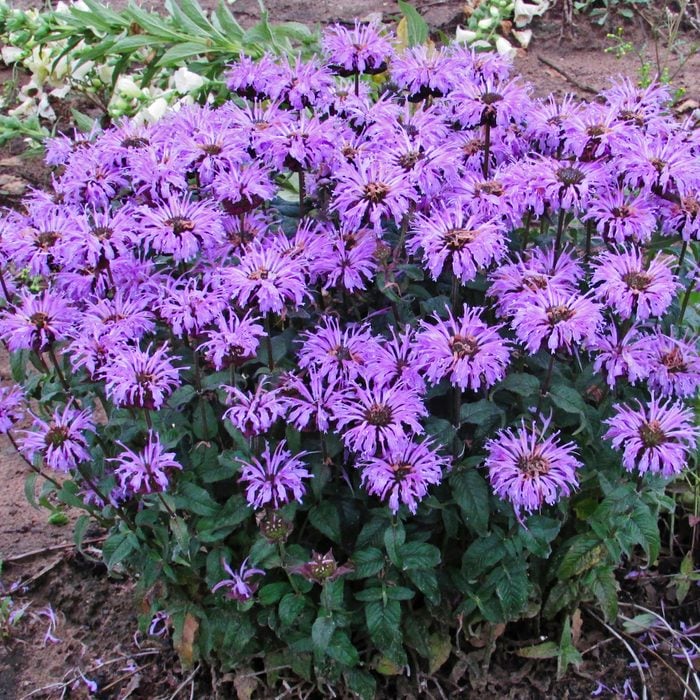
Bee Balm
Monarda spp., Zones 3 to 9
Bee balm comes in a variety of shades, including the pleasing purple hummingbird flowers on cultivars like Pardon My Purple and Purple Rooster. It’s an excellent choice for moist, rich soils, but bee balm is susceptible to mildew. Look for newer varieties bred for resistance.
Why we love it: Bee balm, also called bergamot, has a lovely citrusy scent and flavor and can be used in tea or as a salad topping.
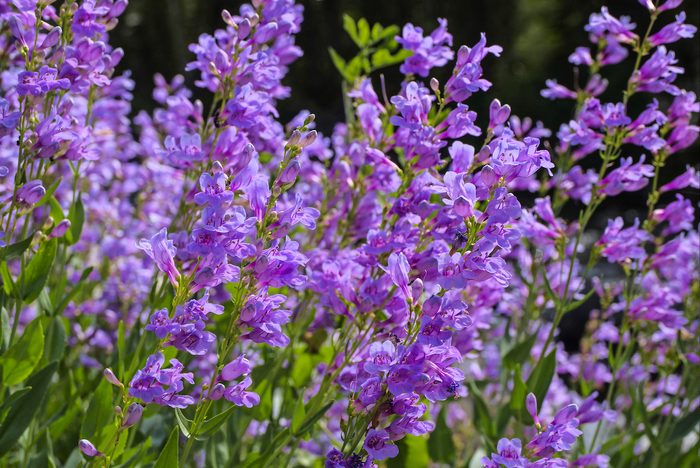
Beardtongue
Penstemon spp., Zones 3 to 9
Tall spires of beardtongue, also called penstemon, are loaded with nectar-filled blooms that hummingbirds can’t resist. Most varieties prefer dry or well-draining soil and don’t tolerate soggy roots or clay. Give them plenty of sun to encourage strong, sturdy growth.
Why we love it: Beardtongue is native to North America, with many options for easy-to-grow species found in nearly every region.
Discover more of the best purple flowers for your garden.
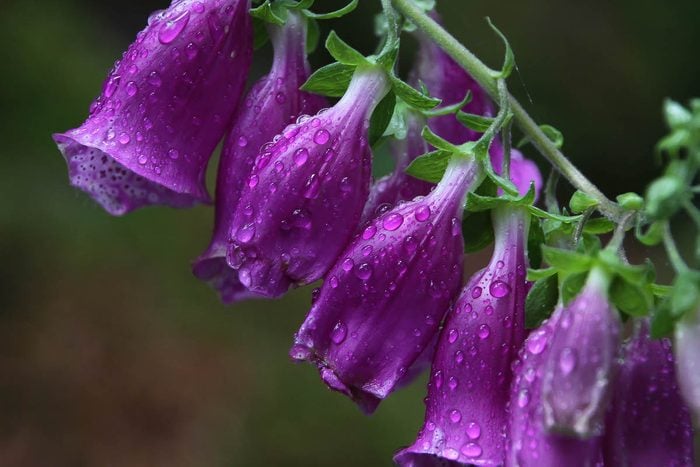
Foxglove
Digitalis purpurea, Zones 4 to 8
Tall and sturdy spires full of blooms grow up to 5 feet tall from a central foliage rosette in spring. Keep foxglove consistently moist but in well-draining soil. Cut back wilted flower stalks to encourage a second flush in midsummer. All parts of this plant are poisonous, so take care around children and pets.
Why we love it: Foxglove’s regal spikes attract hummingbirds but repel deer and rabbits.
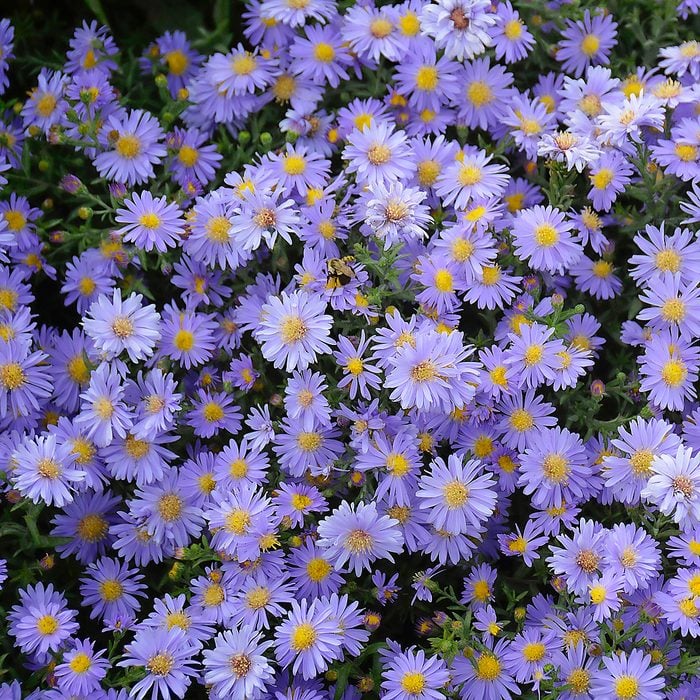
Aster
Symphyotrichum spp., Zones 3 to 10
Asters bear daisylike flowers that crowd the top of the stems, like those of New England aster, or branch out to the sides like the calico aster. Many bloom during hummingbird migration in late summer and fall. Asters usually like moist soil and plentiful sun.
Why we love it: Late season butterflies also love asters, especially when mixed with other plants, such as ironweed and goldenrod.

Columbine
Aquilegia vulgaris, Zones 3 to 8
Columbine flowers are uniquely lovely, and appear in spring around the same time as daffodils and tulips. The bell-shaped blossoms are backed by darker spurs that contain the nectar hummingbirds need. Columbines generally prefer partial shade.
Why we love it: Columbines thrive in woodland wildflower gardens. For another burst of green, cut the plant back to encourage new foliage.
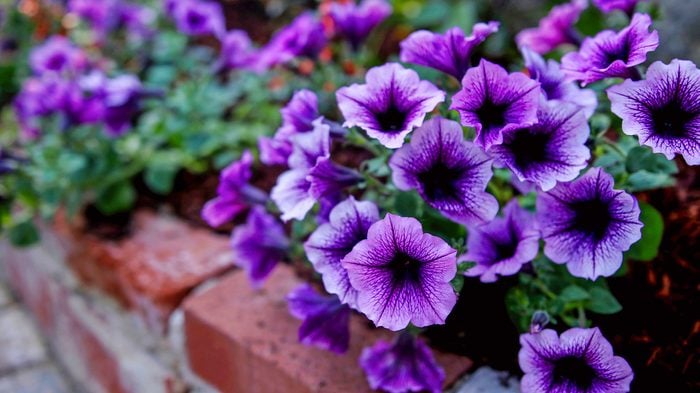
Petunia
Petunia hybrids, Annual
All summer gardens should have a few easygoing petunias to fill the sunny spots. They’re available in a wide range of colors and patterns, some featuring impressive stripes and bicolored blooms. Cut petunias back in summer if they become leggy for improved flowering.
Why we love it: Petunias absolutely shine trailing from hanging baskets and bring visiting hummers up to eye level. Plant these annual flowers to attract hummingbirds.
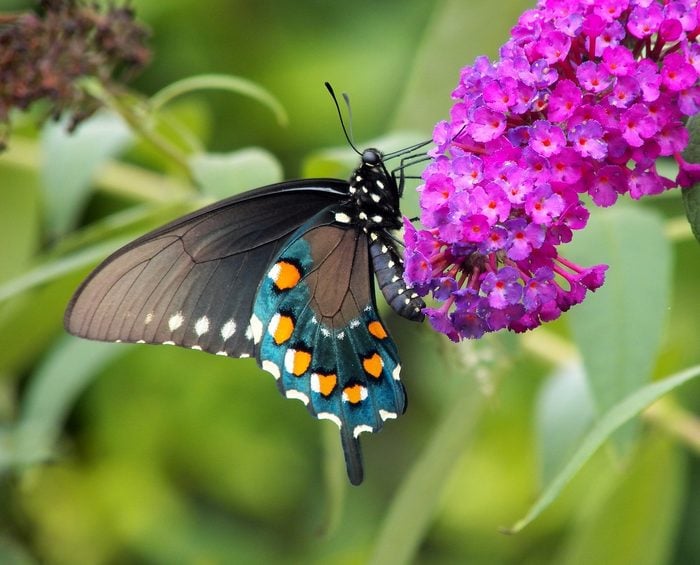
Butterfly Bush
Buddleja davidii, Zones 5 to 9
Butterflies and hummers simply treasure the bright clusters of tiny florets on this small shrub. In cool climates, cut it back 4 to 6 inches from the ground in early spring. Gardeners in warmer areas should also cut back butterfly bush to manage its size. Buddleja is invasive in some areas; check before planting or look for sterile cultivars.
Why we love it: The bush’s light and sweet fragrance will remind you of spring all season long. Check out fragrant flowers that pollinators love.

Rose of Sharon
Hibiscus syriacus, Zones 4 to 9
Whether you grow it as a luscious shrub or groom it into a tree, rose of Sharon boasts big blooms that last only a day. Fortunately, this popular performer flowers continuously from midsummer to fall when planted in full sun. Watch for Japanese beetles, which can cause serious foliage damage.
Why we love it: One cultivar, Blue Bird, has a contrasting deep burgundy center and bright white stamen.
Sources
- Monrovia
- Proven Winners
- White Flower Farm
- Walters Gardens, Inc.
Why Trust Us?
For nearly 30 years, Birds & Blooms, a Trusted Media Brand, has been inspiring readers to have a lifelong love of birding, gardening and nature. We are the #1 bird and garden magazine in North America and a trusted online resource for over 15 million outdoor enthusiasts annually. Our library of thousands of informative articles and how-tos has been written by trusted journalists and fact-checked by bird and garden experts for accuracy. In addition to our staff of experienced gardeners and bird-watchers, we hire individuals who have years of education and hands-on experience with birding, bird feeding, gardening, butterflies, bugs and more. Learn more about Birds & Blooms, our field editor program, and our submission guidelines.

